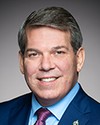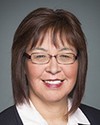You're obviously knowledgeable about the challenges we face.
For the sake of time, I'll try to summarize. Within our region, we are very young. We have a population that's growing exponentially. I believe the last census puts our population under the age of 25 at close to 60% of our regional population, so that's very high growth and an expanding population factor.
That said, we have limited demographics and limited resources that we can call upon. We have many people in small communities who wear many hats, and we ask those who are capable of doing to do as much as they can and more. We have volunteer firefighters, volunteer first responders, and volunteer Canadian Rangers. We have many who step up and meet the call.
That said, volunteering is not necessarily in the same sense that we know it traditionally in the country, because employment and salaried or great jobs or good jobs are very hard to find, so remuneration for any volunteer is very important.
I don't mean to digress here. I just want to try to touch on all of it for your question.
With regard to housing, it's probably one of the most complicated and compounding issues we face. We are facing a shortage of I believe 800 to 1,000 housing units in the region, depending on the last census, the last survey. It's not uncommon to see three and four generations living in a house. We have parents with children and their common-law spouses with their children living in the same house, as well as elders. It's not uncommon to see more than 10 or 12 people living in a three-bedroom house. This causes major problems for many reasons. Also, if we do lose a house to a fire, it just compounds all of the problems exponentially and socially. Because of the climate, the geography, and the remoteness, we can't deal with that for probably a year after the fact, so it's a very devastating issue when we do have fires.




